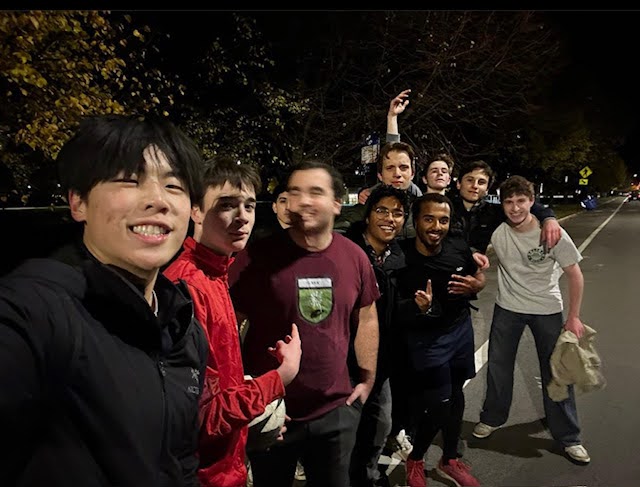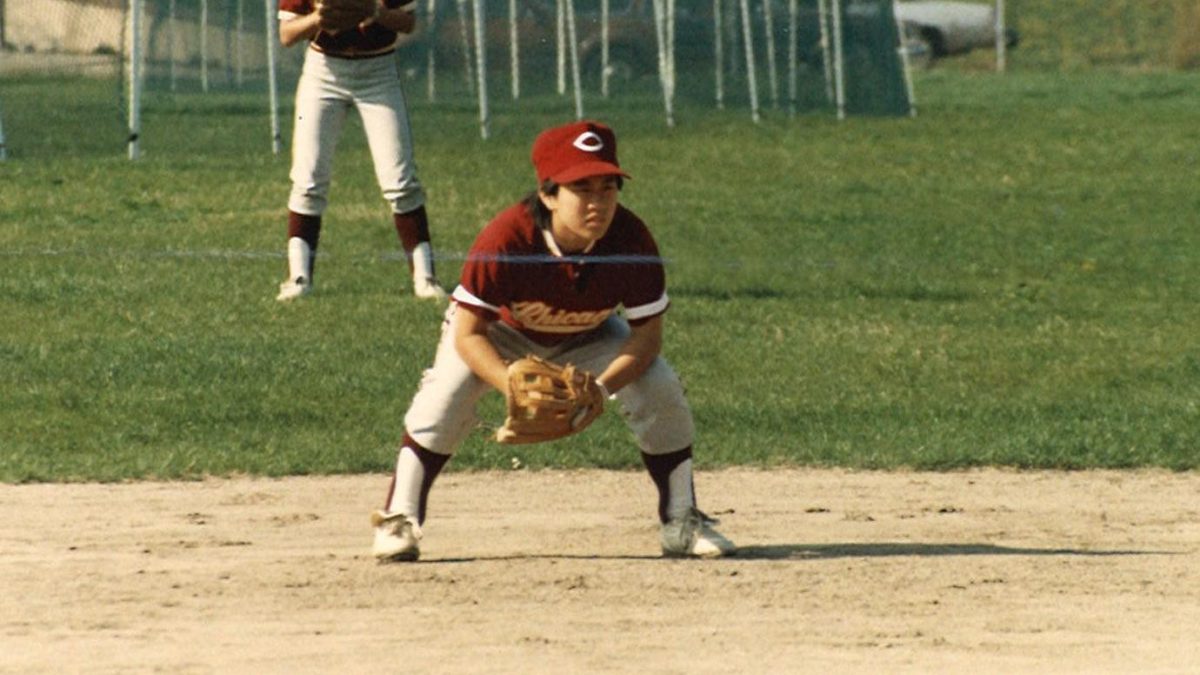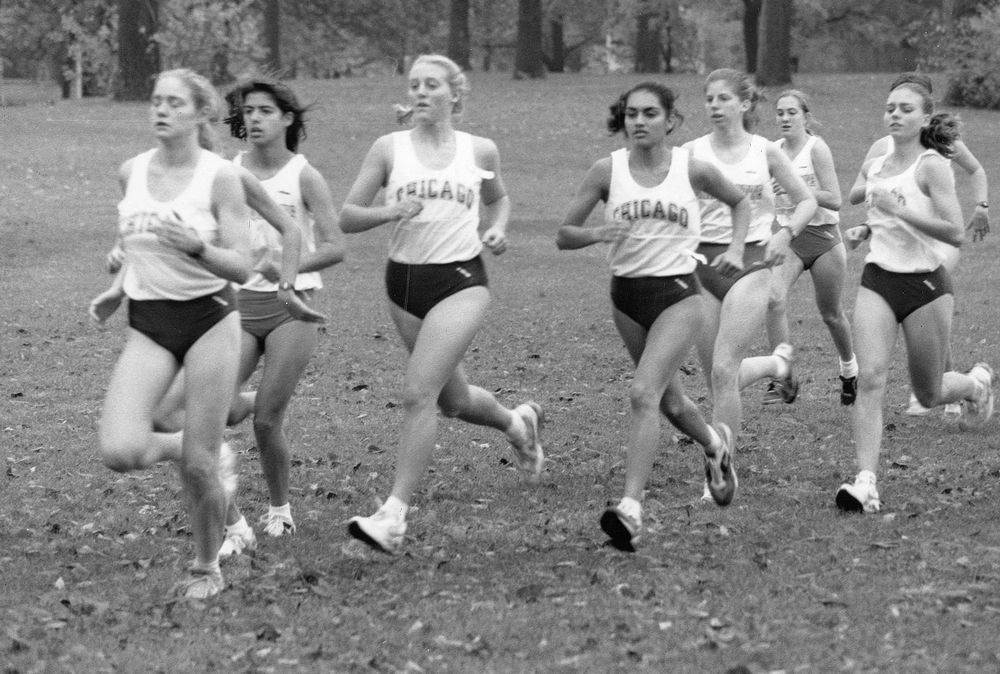Editor’s note: Men’s cross country entered the fall with high hopes after losing just one major contributor from a squad that made the national meet last year. Going into last Saturday’s Midwest Regional meet at Peoria, IL, there seemed to be no reason to expect that they wouldn’t realize those hopes. The team had already recorded a second-place finish at the competitive UAA conference meet, and was looking to make a return trip to nationals.
With the season on the line, team co-captain Pat Hogan offered us his thoughts from the starting line.
Cross country must look pretty twisted from the outside, It doesn’t look a whole lot better from the inside either. It takes a strange personality to become enamored of the sport. Who are these wispy little men and women who derive some intoxicating pleasure from races spanning more miles than most people walk in a week? What are they thinking?
What is it like to be on the road with a cross country team, on the line at a high-stakes race?
I’m afraid I can’t really tell you much, due to the memory-swiping ravages wreaked upon my oxygen-starved brain on. Fortunately, I took some notes along the way. How I took notes during the race remains a mystery even to me.
Friday, November 11
10:35 a.m.: The men’s and women’s teams pile into a specially ordered short bus featuring duct-taped windows and a non-functioning DVD player for the drive out to Peoria. Much show is made of packing numerous books and assignments for class. Ninety percent of them won’t see the light of day again until Sunday.
11:45 a.m.: Lunch stop at Subway. Everyone “eats fresh.”
2:27 p.m.: Arrival at the course for an easy pre-meet run of four to five miles. As we run, people either silently study the course, or else discuss race strategy for the following day, what it’ll take to advance to the national meet, when we should be passing certain points along the course, etc. Legs feel heavy, but that’s almost always a good sign.
6:07 p.m.: Dinner at Chili’s. Despite our best efforts, bottomless baskets of chips prove bottomless.
9:15 p.m.: Hotel room team meeting. Goals are revisited, strategy discussed, and the air crackles with inspiration.
9: 45 p.m.: Numbers are pinned to jerseys. Computerized timing chips are laced into shoes. Racing spikes are checked and reloaded with 3/8” “elements,” gleaming silver teeth ostensibly designed to provide traction on grass and mud, but which are mostly cool because they make you feel as though you’ve got scary claws on your feet.
Saturday, November 12
7:11 a.m.: Despite the lure of extra sleep, some wake up for an early morning shakeout jog. These 10-minute rituals chip off any lingering sluggishness and focus the mind on the task at hand.
7:27 a.m.: Breakfast, which never gets more elaborate than a bowl of frosted flakes and a banana.
9:32 a.m.: As our bus pulls up to the course, we are greeted by the site of some fans and fellow Maroons tailgating in the parking lot. They’d left Chicago before 6 a.m. to set up a grill and lend their support. By the time the gun sounds for the women’s race at 11, legions of Chicago fans will have arrived, and will be going nuts on the sidelines during the race. Friends, alums and parents are all out in force. Giant “UCXC” banners adorn trees course-wide, and teammates who won’t be racing carry homemade flags emblazoned with the same emblem. The park swells with hundreds of supporters for every team. We all know this will be the most emotionally charged meet of the season, if not our careers.
10:17 a.m.: As if anything were needed to complete the race-day atmosphere, an announcement from the loudspeaker confirms that we have a race commentator who sounds like he’s on loan from the BBC World Service.
11:15-11:45 a.m.: Countless numbers of bathroom breaks. Each runner’s bowels have finally realized what they’re in for. We take our ritual two-mile warm-up before arriving at the line for final preparations.
11:55 a.m.: A few quick strides, followed by a last-minute huddle in which we reaffirm what we know must be done, and put our trust in one another to do it.
11:59 a.m.: Hundreds of runners paw the ground at the line. Silence descends upon the crowds as the starter walks to the middle of the field before us.
Mile One, 12:00-12:04:57 p.m.: The gun sounds, but we’re already moving at the first hint of smoke trailing into the sky. The race erupts in a surging roar of color and sound. All season long, we’ve trained with the philosophy of pack-running in mind, following the principle that we are stronger running in groups of two or three or four rather than scattered and lost as individuals in a sea of bodies. Together, we can feed off and draw strength from one another. Fueled by pure adrenaline, the first mile of a race is the easiest, but for the same reason it’s also the most potentially dangerous. If you get out too hard, even by so much as a few seconds, you’ll pay for it with severe interest. Few people realize how cerebral a sport cross country is, how it tests one’s mind and self-control as much as it does a body’s fitness. Our coach always tells us that the majority of mistakes are made in the first two minutes of a race. With this in mind, our pack works together among the throngs, checking one another to make sure the pace is controlled but still enough to put us where we need to be.
Mile Two, 12:04:57-12:10:08 p.m.: Still working together and still feeling the adrenal juice and the crowd’s steady cheers. By the end of the second mile it’s clear that we’ve gone out perfectly. We’re not too fatigued and remain in position to move up later in the race without relying on front-runners fading out. As the middle miles approach, the danger of a crack in the mental armor is ever-present. We must increasingly depend on our hearts and guts, rather than our heads, to carry us to the end.
Mile Three, 12:10:08-12:15:17 p.m.: This is the mile in which the walls are hit. The rictus contortions on the faces of fading runners stand as testaments to their early-race folly. Over the next ten minutes, trusting yourself and your teammates to move past people and deeply ingrained knowledge that you’ll be able to close out the race will be crucial. The wind bites deeper. Despair grows stronger in the nascent shadow of doubt.
Mile Four, 12:15:17-12:20:23 p.m.: I don’t believe anybody who races eight kilometers really remembers much about the fourth mile. Even if they do, they probably make every effort to forget about it as soon as possible. Running is the anvil upon which the soul is forged and reshaped, and every step at this stage strikes one more hammer-blow. The only thought that counts is to catch that next runner, just one more runner
Mile Five, 12:20:23-12:25:28 p.m.: Having gone out intelligently works wonders for the closing mile of the race. Propelled by the sudden realization that it’s almost over, you may find something deep within yourself that you forgot existed. Some people like to call a kick, but which I prefer to think of as the same sort of electrical twitches that keep corpses jerking around for a little while. This magical surge lasts just long enough to haul you across the line and then drops you flat.
12:30 p.m.: All the pain, all the despair has already begun to recede to be replaced by elation and a supreme sense of fulfillment. Your team just accomplished something wondrous. As a result, you will be honored with the opportunity to do it all over again—this time with hills!—in one week’s time…
Editor’s note: The 15th-ranked Maroons finished fourth, behind second-ranked UW-LaCrosse, fifth-ranked UW-Oshkosh, and ninth-ranked North Central, but still in a position to qualify for tomorrow’s national championship meet. Hogan’s 25:28 mark was 14th-best in the region, good for All-Midwest honors. Check Tuesday’s issue of the Maroon for another edition of Hogan’s accounts, this time from NCAAs.







